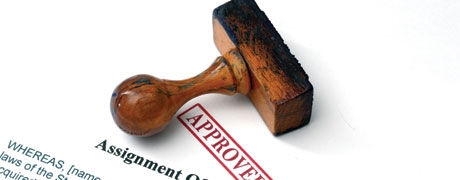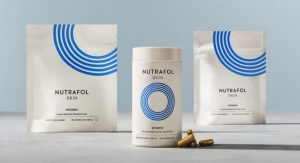Rakesh M. Amin, LLM, RPh & Brent A. Batzer, Amin Talati10.01.14
Intellectual property, and patents in particular, is a significant part of any nutraceutical business today. Whether they are your patents or those owned by others, having an established strategy to develop and exploit your own intellectual property while minimizing your risks with respect to others’ patents is a valuable piece of your business strategy.
A basic patent strategy has three primary areas of focus: patent procurement (i.e., obtaining patent rights), patent enforcement and risk management. Each is important to protect your company and can be done with varying levels of expense. Be aware that spending some money now can net you significant money later, whether through value added or money saved in avoiding costly litigation.
Back to Basics
The first and best place to look for potential patentable material is within the company. To audit your home-grown intellectual property, an understanding of some patent law basics is helpful. In order to be patentable, an invention must be new, useful and non-obvious in light of what existed before it, which includes all patents, published patent applications and non-patent publications worldwide.
Furthermore, the invention must fall within the “patentable subject matter” as required by statute. The meaning of the statute has been the subject of recent attention from the courts and U.S. Patent and Trademark Office, with particular importance for the natural products industry. One constant has been the continued patentability of specific methods of uses of natural products. Thus, if you have inventions involving natural products, such as plant extracts, you will want to consult with a patent attorney in order to determine whether you may have patentable subject matter under the current state of the law, and your options going forward.
Your internal review should include a basic recording system that will allow you to review any potential inventions as they are developed for possible patentable subject matter. One such way of collecting the relevant information is by using a record of invention form. This puts the information into one place for the reviewer, and also will save time with your patent attorney if you decide to pursue a patent application. Your patent attorney can provide you with a form and help you set up a plan to harvest the inventions from your R&D operations. Due to recent changes in the law, time is of the essence in filing for protection, as the first inventor to file a patent application has priority to get the patent on the invention, even when another may have invented the same invention first. Making a record of invention part of your standard process helps under this “first-to-file” regime by speeding up your internal fact-gathering.
As part of your patenting strategy, you should also consider protection internationally. Patents in many other countries can be applied for using your U.S. patent application as the starting point, including the priority date. Each country will typically have occasional or even yearly fees in order to maintain the patent as active, and these fees can add up quickly. Your international strategy should focus on specific countries that are important markets for your company in order to get the best “bang for your buck” on your foreign patent holdings.
Patent rights can also be purchased from others. One common way of obtaining rights is through a license. Patent licenses can be mutually beneficial; a patentee may not be able to commercialize an invention due to lack of funds or other barriers to entry, while a licensee can obtain rights (particularly in an exclusive license) that give it an advantage in the marketplace. Patents can also be purchased outright, whether at a patent auction or bankruptcy asset sale, or purchased directly from an owner willing to sell. Joint ventures may also generate patentable inventions, or be based on the patents already owned by one party with the goal of improvement in some way, with the improvements owned by both parties.
Enforce & Protect
The second piece of a patent strategy is enforcing your rights under the patents. Patents grant the owner the right to exclude others from using the invention, as defined by the claims of the patent. Enforcement is typically accomplished in one of two ways: a cease-and-desist letter or other communications with the potential infringer, and litigation in the courts.
Of course, in order to enforce you must first determine who might be infringing your patent. Pay close attention to your competitors in the market, and if you notice a possible infringer, contact your patent litigation counsel as soon as possible in order to weigh the two primary options. The cease-and-desist letter is commonly the first step. A cease-and-desist letter informs an infringer of your patent rights and requests that they cease the infringing activity. One must take care to have performed an adequate investigation into the infringement prior to sending such a letter. A letter sent with little investigation or in bad faith can expose the sender to claims such as unfair competition. A poorly timed cease-and-desist letter may also permit the infringer to strike first and file a declaratory judgment lawsuit in a location inconvenient and more costly for you. In some situations, you may determine it prudent to proceed directly to litigation without any sort of dialogue with the opposing party in advance.
The third piece of patent strategy is protecting your company from infringement suits. One method of determining whether your competitors have patents covering their products is to look at their packaging. A patent owner may mark products with the patent numbers. Note that such marking is not required, but is generally considered a best practice because it can greatly increase the amount of damages to which they are entitled. Once you have determined the patents that your competitor asserts cover its product, you and your patent counsel can compare the claims of those patents to your products.
Another way to try to avoid claims against you proactively is to have a freedom-to-operate search performed for your product, particularly when you introduce a product or reformulate an existing one. This search can help determine if there are patents of others that cover your product and allow you to “design around” the patent if possible. Having the search performed and an opinion of counsel at an early stage gives you the best chance to design around without having already launched a product. Keep in mind that no search or opinion can guarantee your company will not be sued by a patent holder. However, it can affect the damage award and should reduce the chances of such lawsuits against you.
Lastly, you may also consider the possibility of commencing a reexamination or post-grant review of your competitor’s patent. Reexaminations and post-grant reviews are proceedings at the Patent Office based on prior art that was not considered by the examiner, or based on an argument that the examiner missed in art that was cited. Each form of review that is available carries its own advantages and disadvantages. For example, an ex parte reexamination is less expensive than an inter partes review, but the ex parte reexamination allows you much less participation in the process than an inter partes review. If specific patents appear to be a threat to your business, consider discussing these options with your patent attorney to see if this sort of “preemptive strike” might make sense for your business.
In implementing the entire strategy, you may notice information found in one aspect can lead to an opportunity in another. For example, you may have a freedom-to-operate search performed and discover that a patent is owned but does not appear to be used by the owner. This may present an opportunity for purchase or a license. Likewise, vigilance in monitoring for infringers of your own patents may reveal opportunities to work together with another company, or spark an innovation of your own that may be patentable. The patent strategy works as a unified whole to help maximize your ability to protect and monetize your products and innovations.
Rakesh M. Amin, LLM, RPh is a partner at Amin Talati. He advises clients on intellectual property matters, as well as FDA, FTC, U.S. Customs, USDA and related regulatory and litigation matters. Brent A. Batzer is an associate with the intellectual property practice at Amin Talati. He is a registered patent attorney and advises clients on patents, trade secrets and other forms of intellectual property, as well as IP-related transactional matters and litigation.
A basic patent strategy has three primary areas of focus: patent procurement (i.e., obtaining patent rights), patent enforcement and risk management. Each is important to protect your company and can be done with varying levels of expense. Be aware that spending some money now can net you significant money later, whether through value added or money saved in avoiding costly litigation.
Back to Basics
The first and best place to look for potential patentable material is within the company. To audit your home-grown intellectual property, an understanding of some patent law basics is helpful. In order to be patentable, an invention must be new, useful and non-obvious in light of what existed before it, which includes all patents, published patent applications and non-patent publications worldwide.
Furthermore, the invention must fall within the “patentable subject matter” as required by statute. The meaning of the statute has been the subject of recent attention from the courts and U.S. Patent and Trademark Office, with particular importance for the natural products industry. One constant has been the continued patentability of specific methods of uses of natural products. Thus, if you have inventions involving natural products, such as plant extracts, you will want to consult with a patent attorney in order to determine whether you may have patentable subject matter under the current state of the law, and your options going forward.
Your internal review should include a basic recording system that will allow you to review any potential inventions as they are developed for possible patentable subject matter. One such way of collecting the relevant information is by using a record of invention form. This puts the information into one place for the reviewer, and also will save time with your patent attorney if you decide to pursue a patent application. Your patent attorney can provide you with a form and help you set up a plan to harvest the inventions from your R&D operations. Due to recent changes in the law, time is of the essence in filing for protection, as the first inventor to file a patent application has priority to get the patent on the invention, even when another may have invented the same invention first. Making a record of invention part of your standard process helps under this “first-to-file” regime by speeding up your internal fact-gathering.
As part of your patenting strategy, you should also consider protection internationally. Patents in many other countries can be applied for using your U.S. patent application as the starting point, including the priority date. Each country will typically have occasional or even yearly fees in order to maintain the patent as active, and these fees can add up quickly. Your international strategy should focus on specific countries that are important markets for your company in order to get the best “bang for your buck” on your foreign patent holdings.
Patent rights can also be purchased from others. One common way of obtaining rights is through a license. Patent licenses can be mutually beneficial; a patentee may not be able to commercialize an invention due to lack of funds or other barriers to entry, while a licensee can obtain rights (particularly in an exclusive license) that give it an advantage in the marketplace. Patents can also be purchased outright, whether at a patent auction or bankruptcy asset sale, or purchased directly from an owner willing to sell. Joint ventures may also generate patentable inventions, or be based on the patents already owned by one party with the goal of improvement in some way, with the improvements owned by both parties.
Enforce & Protect
The second piece of a patent strategy is enforcing your rights under the patents. Patents grant the owner the right to exclude others from using the invention, as defined by the claims of the patent. Enforcement is typically accomplished in one of two ways: a cease-and-desist letter or other communications with the potential infringer, and litigation in the courts.
Of course, in order to enforce you must first determine who might be infringing your patent. Pay close attention to your competitors in the market, and if you notice a possible infringer, contact your patent litigation counsel as soon as possible in order to weigh the two primary options. The cease-and-desist letter is commonly the first step. A cease-and-desist letter informs an infringer of your patent rights and requests that they cease the infringing activity. One must take care to have performed an adequate investigation into the infringement prior to sending such a letter. A letter sent with little investigation or in bad faith can expose the sender to claims such as unfair competition. A poorly timed cease-and-desist letter may also permit the infringer to strike first and file a declaratory judgment lawsuit in a location inconvenient and more costly for you. In some situations, you may determine it prudent to proceed directly to litigation without any sort of dialogue with the opposing party in advance.
The third piece of patent strategy is protecting your company from infringement suits. One method of determining whether your competitors have patents covering their products is to look at their packaging. A patent owner may mark products with the patent numbers. Note that such marking is not required, but is generally considered a best practice because it can greatly increase the amount of damages to which they are entitled. Once you have determined the patents that your competitor asserts cover its product, you and your patent counsel can compare the claims of those patents to your products.
Another way to try to avoid claims against you proactively is to have a freedom-to-operate search performed for your product, particularly when you introduce a product or reformulate an existing one. This search can help determine if there are patents of others that cover your product and allow you to “design around” the patent if possible. Having the search performed and an opinion of counsel at an early stage gives you the best chance to design around without having already launched a product. Keep in mind that no search or opinion can guarantee your company will not be sued by a patent holder. However, it can affect the damage award and should reduce the chances of such lawsuits against you.
Lastly, you may also consider the possibility of commencing a reexamination or post-grant review of your competitor’s patent. Reexaminations and post-grant reviews are proceedings at the Patent Office based on prior art that was not considered by the examiner, or based on an argument that the examiner missed in art that was cited. Each form of review that is available carries its own advantages and disadvantages. For example, an ex parte reexamination is less expensive than an inter partes review, but the ex parte reexamination allows you much less participation in the process than an inter partes review. If specific patents appear to be a threat to your business, consider discussing these options with your patent attorney to see if this sort of “preemptive strike” might make sense for your business.
In implementing the entire strategy, you may notice information found in one aspect can lead to an opportunity in another. For example, you may have a freedom-to-operate search performed and discover that a patent is owned but does not appear to be used by the owner. This may present an opportunity for purchase or a license. Likewise, vigilance in monitoring for infringers of your own patents may reveal opportunities to work together with another company, or spark an innovation of your own that may be patentable. The patent strategy works as a unified whole to help maximize your ability to protect and monetize your products and innovations.
Rakesh M. Amin, LLM, RPh is a partner at Amin Talati. He advises clients on intellectual property matters, as well as FDA, FTC, U.S. Customs, USDA and related regulatory and litigation matters. Brent A. Batzer is an associate with the intellectual property practice at Amin Talati. He is a registered patent attorney and advises clients on patents, trade secrets and other forms of intellectual property, as well as IP-related transactional matters and litigation.




























